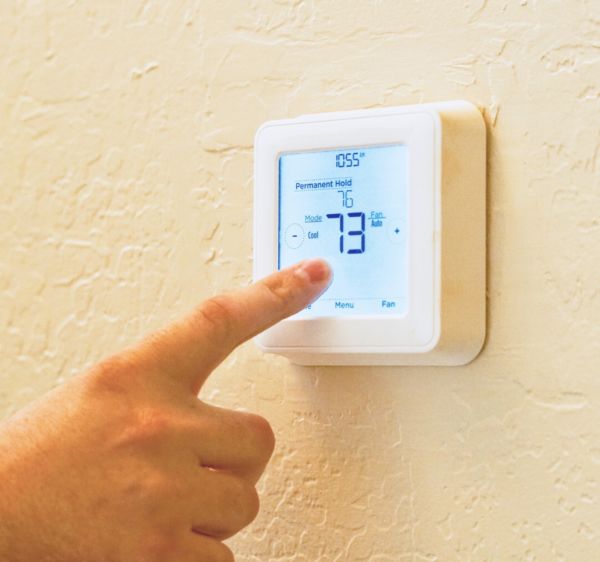How Much Does It Cost to Install a Home Thermostat in Florida?
November 03, 2024

A home thermostat is crucial to keeping your climate control running smoothly. It regulates and monitors the temperature in your home, triggering your HVAC unit to activate when the indoor temperature falls outside the preprogrammed range you've designated to activate heating or AC.
When your thermostat stops working correctly, you may run into issues, such as inconsistent temperature or your HVAC failing to turn on or off when it should. This can equate to excessive energy costs and wear and tear on your HVAC. If your thermostat no longer works, it may be time to replace it.
In Florida, installing a home thermostat can cost anywhere from $180 to over $1,000. However, the average homeowner pays $450.
Why such a big range in cost? It varies based on several factors, including:
- Type of thermostat
- Installation complexity
- The contractor you hire
Get Your New Thermostat Quickly With Advanced Air
Since 1989, we've been in the business of helping Floridians keep their homes comfortable year-round. Your smart thermostat installation is backed with a 100% satisfaction guarantee, and we promise you won't find any surprises when you get your final bill.
Type of Thermostat
Overall, you have three choices for the type of thermostat in your home. All three work to control the temperature of your indoor air, but they achieve this with different features.
Manual Thermostat
A manual thermostat is your basic thermostat with minimal extra features, if any. You can simply adjust the temperature as you please, typically with buttons or a dial. They may be digital or manual. Digital thermostats may include a backlit display and allow you to set an exact temperature. Manual thermostats often use knobs so you can set an approximate temperature.
This is the most affordable option of the three, averaging $25 to $60 before installation costs are considered.
Programmable Thermostat
A programmable thermostat is a step up from a manual thermostat. It allows you to create a schedule that determines what temperature your home should be and at what times. For example, you might set the thermostat to keep the house warmer when you're not home during the summer and automatically start cooling it down to your desired temperature around when you return.
The biggest benefit of this kind of scheduling is that you can save money on your energy bill. You don't waste energy (and therefore money) heating or cooling your home when you're not there anyway, reducing your energy bill.
However, the cost of installing these thermostats increases somewhat from the cost of a manual unit. They average between $90 and $150 before installation costs are considered.
Smart Wireless Thermostats
Smart wireless thermostats are essentially programmable thermostats with more advanced features. Most notably, they allow you remote access to your thermostat from your phone or other compatible smart home devices. Some of them also learn your habits over a few weeks and begin to make energy-efficient temperature decisions for you. Depending on how you control them, some can even detect when you leave and return based on the connectivity to your phone, which allows them to adjust your temperature automatically.
These advanced features don't always come cheaply, though. Smart thermostat installation costs can range from $200 to $500 before labor is factored into the bill. However, they're the best option on the market, especially if you're looking for ways to reduce your energy bill over time.
Installation Complexity
The price you're quoted for your thermostat installation considers how complex the thermostat is to install. If it's a more difficult job, you'll pay more for labor. Certain factors can add to the challenges of the installation, including:
- Dual-fuel systems
- Whole-home humidifiers or dehumidifiers
- Wall repairs due to thermostat placement
- Connecting a smart thermostat to Wi-Fi
- If a thermostat has to be installed somewhere new instead of where the original one was
The Contractor You Hire
The contractor you hire also changes how much it costs to install a thermostat. Some may price their services higher than others, but this is one place where you want to make sure you get quality. You're not just paying for the job to be done. You're also paying for years, or even decades, of experience. If you have to choose between a cheaper but less experienced technician or a more expensive but skilled one, choosing the skilled one often pays dividends because you know the job is done right and can trust the work done.
Not Sure Which Thermostat to Choose? Let Advanced Air Help
Our honest, professional technicians have earned thousands of 5-star reviews from customers just like you. Our fast and convenient scheduling gets your smart thermostat installation up and running sooner rather than later.
- Posted in:
- Air Conditioner

